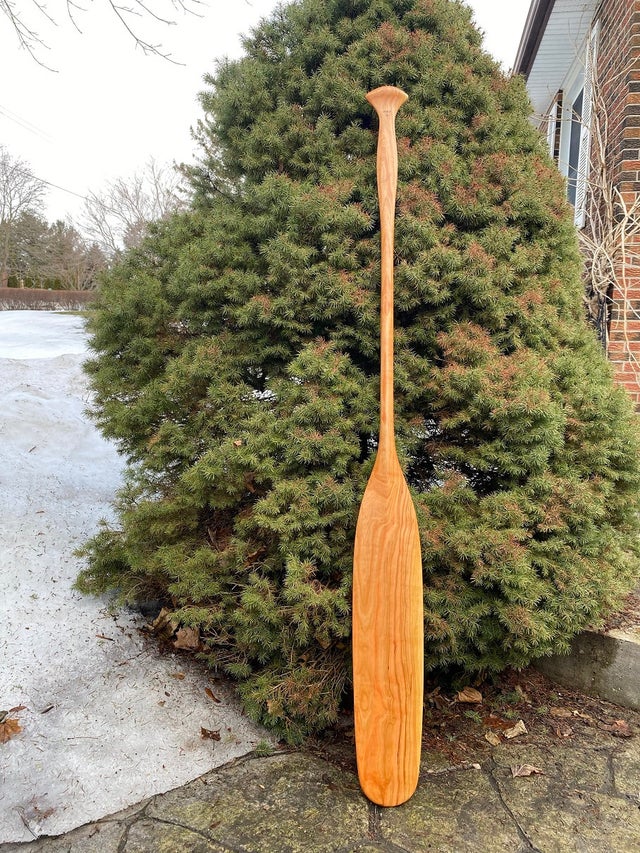I recently ordered a cherry paddle for my wife from an established maker. I have two cherry paddles from this maker and really like them. They have a very fine and flexy blade are light and a joy to use. I believe they were made in the late 90s as that is when the boat that they came with was made. The new paddle while very nice to look at is very heavy, thick, and stiff. I was hoping for a paddle that I'd be afraid to break, not one that I couldn't break if I tried.
Here are some specs:
Weights of my old paddles are, 66" is 28.64 oz, 60" is 26.17oz. The new paddle is 57" and weighs 31.85oz.
The blade edge thickness on the old ones are .13" or slightly over an 1/8th. The new one is a solid quarter inch.
The shaft is .15" thicker and the grip is over an eighth thicker.
Her previous 57" weighed 23.56. We have another 57" paddle, a vintage Old Town that weighs exactly what the new paddle weighs and deemed it too heavy for comfortable use for her.
I spoke with a company employee and he couldn't really comment because he didn't do the work. He didn't offer any solutions so I asked about sending it back and having it trimmed down. He said they would do that but I had to pay shipping back to them and they would pay to ship it back. I've already paid 45.00 to have it shipped once and assume it would be about the same to ship back to them.
The options I can see are: 1) shipping it back and hope I'm happy with the results, 2) sand it down myself and see what happens or 3) leave it as is and she can use it in whitewater. Anybody have any other suggestions?
Here are some specs:
Weights of my old paddles are, 66" is 28.64 oz, 60" is 26.17oz. The new paddle is 57" and weighs 31.85oz.
The blade edge thickness on the old ones are .13" or slightly over an 1/8th. The new one is a solid quarter inch.
The shaft is .15" thicker and the grip is over an eighth thicker.
Her previous 57" weighed 23.56. We have another 57" paddle, a vintage Old Town that weighs exactly what the new paddle weighs and deemed it too heavy for comfortable use for her.
I spoke with a company employee and he couldn't really comment because he didn't do the work. He didn't offer any solutions so I asked about sending it back and having it trimmed down. He said they would do that but I had to pay shipping back to them and they would pay to ship it back. I've already paid 45.00 to have it shipped once and assume it would be about the same to ship back to them.
The options I can see are: 1) shipping it back and hope I'm happy with the results, 2) sand it down myself and see what happens or 3) leave it as is and she can use it in whitewater. Anybody have any other suggestions?




